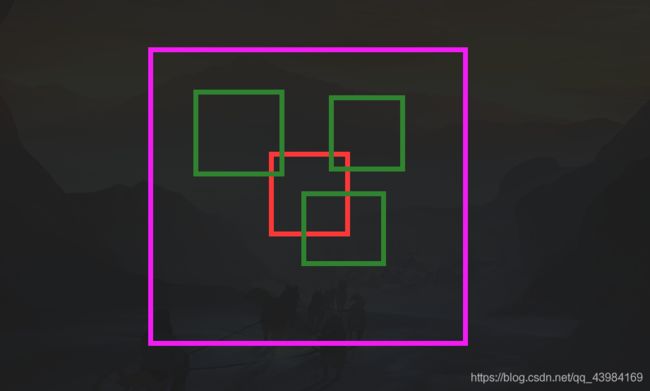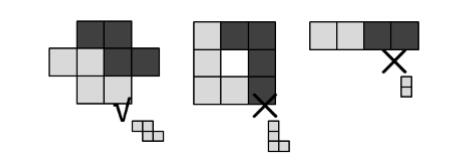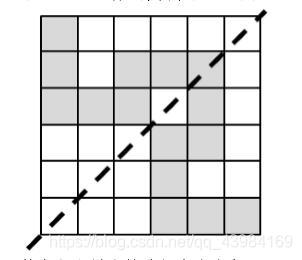HNUCM2020年春季ACM集训队热身赛-第6场题解
问题 A: 最小素数对
题目描述
任意一个偶数(大于2)都可以由2个素数组成,组成偶数的2个素数有很多种情况,本题目要求输出组成指定偶数的两个素数差值最小的素数对。
输入
输入一个偶数。
输出
输出两个素数。
样例输入
20
样例输出
7
13
数据不大,直接枚举所有情况,判断两个数是不是素数即可
#include 问题 B: 自守数
题目描述
自守数是指一个数的平方的尾数等于该数自身的自然数。例如:25^2 = 625,76^2 = 5776,9376^2 = 87909376。请求出n以内的自守数的个数。
输入
int型整数。
输出
n以内自守数的数量。
样例输入
2000
样例输出
8
暴力跑出所有自守数,在对输入的数进行判断
暴力代码
#include 提交代码
#include 问题 C: 埃及分数
题目描述
分子为1的分数称为埃及分数。现输入一个真分数(分子比分母小的分数,叫做真分数),请将该分数分解为埃及分数。如:8/11 = 1/2+1/5+1/55+1/110。 但这次我们不需要输出满足埃及分数的分解_,输出任意一种正确分法即可
输入
输入一个真分数(字符串)。
输出
输出分解后的埃及分数(字符串)。
样例输入
8/11
样例输出
1/2+1/5+1/55+1/110
输出任意解即可
a/b可以分成a个1/b
#include 问题 D: 字典序
题目描述
给定n个字符串,请对n个字符串按照字典序排列。
输入
输入第一行为一个正整数n(1≤n≤1000),下面n行为n个字符串(字符串长度≤100),字符串中只含有大小写字母。
输出
数据输出n行,输出结果为按照字典序排列的字符串。
样例输入
9
cap
to
cat
card
two
too
up
boat
boot
样例输出
boat
boot
cap
card
cat
to
too
two
up
string存字符串sort排序
#include 问题 E: 1的个数
题目描述
输入一个int型的正整数,计算出该int型数据在内存中存储时1的个数。
输入
输入一个整数(int类型)。
输出
这个数转换成2进制后,输出1的个数。
样例输入
5
样例输出
2
#include 问题 F: 数字整除
题目描述
定理:把一个至少两位的正整数的个位数字去掉,再从余下的数中减去个位数的5倍。当且仅当差是17的倍数时,原数也是17的倍数 。
例如,34是17的倍数,因为3-20=-17是17的倍数;201不是17的倍数,因为20-5=15不是17的倍数。输入一个正整数n,你的任务是判断它是否是17的倍数。
输入
输入文件最多包含10组测试数据,每个数据占一行,仅包含一个正整数n(1<=n<=10100),表示待判断的正整数。n=0表示输入结束,你的程序不应当处理这一行。
输出
对于每组测试数据,输出一行,表示相应的n是否是17的倍数。1表示是,0表示否。
样例输入
34
201
2098765413
1717171717171717171717171717171717171717171717171718
0
样例输出
1
0
1
0
题面介绍了一个定理,但是感觉问题变得更麻烦了
那就不管它,直接判断是否可以被17整除
用数组存n,模拟除法
#include 问题 G: 多连块拼图
题目描述
多连块是指由多个等大正方形边与边连接而成的平面连通图形。
– 维基百科
给一个大多连块和小多连块,你的任务是判断大多连块是否可以由两个这样的小多连块拼成。小多连块只 能平移,不能旋转或者翻转。两个小多连块不得重叠。左下图是一个合法的拼法,但右边两幅图都非法。中间 那幅图的问题在于其中一个小多连块旋转了,而右图更离谱:拼在一起的那两个多连块根本就不是那个给定的 小多连块(给定的小多连块画在右下方)。
输入
输入最多包含 20 组测试数据。每组数据第一行为两个整数 n 和 m(1<=m<=n<=10)。以下 n 行描述大多连 块,其中每行恰好包含 n 个字符或者.,其中表示属于多连块,.表示不属于。以下 m行为小多连块,格式同大 多连块。输入保证是合法的多连块(注意,多连块至少包含一个正方形)。输入结束标志为 n=m=0。
输出
对于每组测试数据,如果可以拼成,输出 1,否则输出 0。
样例输入
4 3
.**.
****
.**.
....
**.
.**
...
3 3
***
*.*
***
*..
*..
**.
4 2
****
....
....
....
*.
*.
0 0
样例输出
1
0
0
每一次匹配找到a的第一个星号和b的第一个星号,找到映射关系,进行匹配
匹配失败直接输出0
匹配两次后还有*也输出0

避免一些数据使下标访问越界如
3 3
*..
...
...
...
...
..*
所以将数组开成30(紫红色框),横纵坐标全部加10
那数组b(绿色框)在数组a(红色框)匹配的时候就不会越界
#include 问题 H: 最优对称路径
题目描述
给一个 n 行 n 列的网格,每个格子里有一个 1 到 9 的数字。你需要从左上角走到右下角,其中每一步只能 往上、下、左、右四个方向之一走到相邻格子,不能斜着走,也不能走出网格,但可以重复经过一个格子。为 了美观,你经过的路径还必须关于“左下-右上”这条对角线对称。下图是一个 6x6网格上的对称路径。
你的任务是统计所有合法路径中,数字之和最小的路径有多少条。
输入
输入最多包含 25组测试数据。每组数据第一行为一个整数 n(2<=n<=100)。以下 n 行每行包含 n 个 1 到 9 的数字,表示输入网格。输入结束标志为 n=0。
输出
对于每组数据,输出合法路径中,数字之和最小的路径条数除以 1,000,000,009 的余数。
样例输入
2
1 1
1 1
3
1 1 1
1 1 1
2 1 1
0
样例输出
2
3
路径是对称的,我们找到了一边的路径另一边的路径也就确定
将网格按左下到右上的对角线折叠,右下的数字加到左上,从点(1,1)走到对角线就确定了一条路径
对于最优路径数量
先bfs处理出从(1,1)开始到每一个格子的最少数字和。
获得到对角线的最小数字和后,dfs计算路径数量
避免超时,也要进行剪纸和记忆化
#include 
